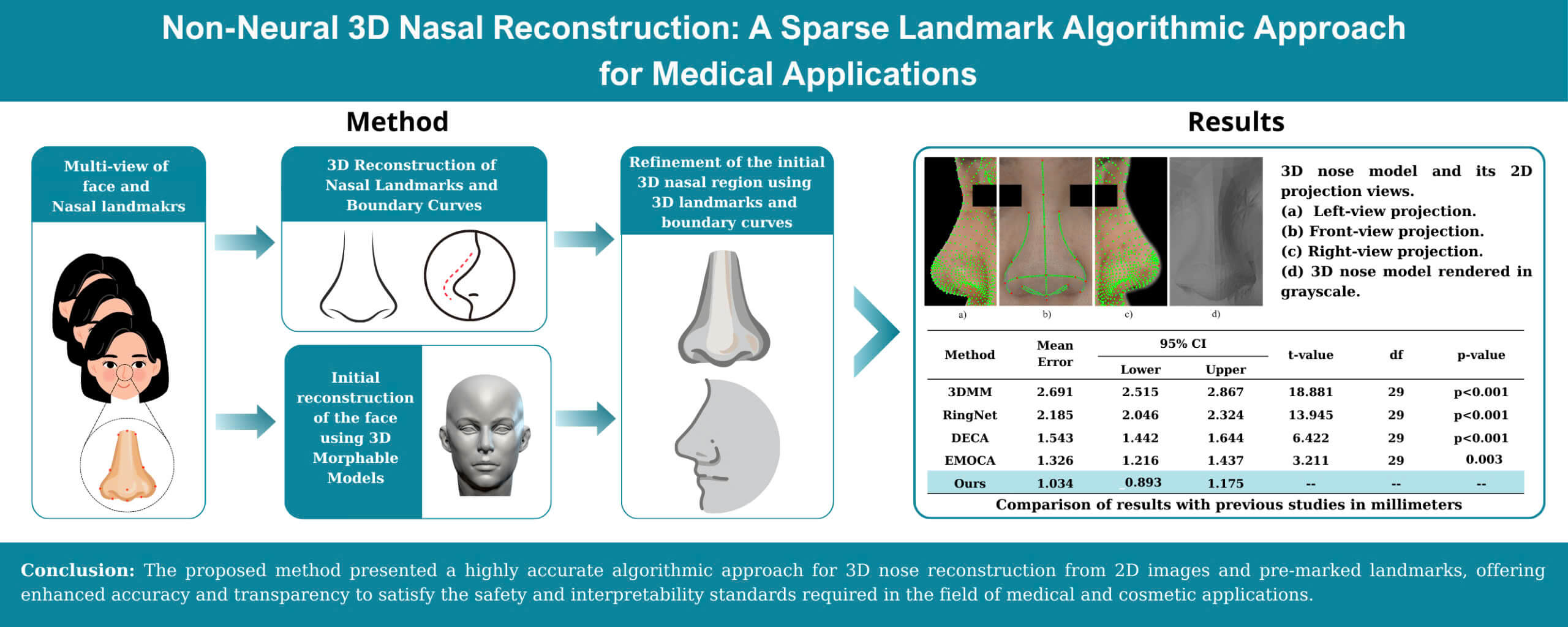 Open Access
Open Access
ARTICLE
Non-Neural 3D Nasal Reconstruction: A Sparse Landmark Algorithmic Approach for Medical Applications
1 Institute of Intelligent and Interactive Technologies, University of Economics Ho Chi Minh City–UEH, Ho Chi Minh City, 70000, Vietnam
2 Anatomy Department, Pham Ngoc Thach University of Medicine, Ho Chi Minh City, 70000, Vietnam
* Corresponding Author: Nguyen Truong Thinh. Email:
(This article belongs to the Special Issue: Recent Advances in Signal Processing and Computer Vision)
Computer Modeling in Engineering & Sciences 2025, 143(2), 1273-1295. https://doi.org/10.32604/cmes.2025.064218
Received 08 February 2025; Accepted 16 May 2025; Issue published 30 May 2025
Abstract
This paper presents a novel method for reconstructing a highly accurate 3D nose model of the human from 2D images and pre-marked landmarks based on algorithmic methods. The study focuses on the reconstruction of a 3D nose model tailored for applications in healthcare and cosmetic surgery. The approach leverages advanced image processing techniques, 3D Morphable Models (3DMM), and deformation techniques to overcome the limitations of deep learning models, particularly addressing the interpretability issues commonly encountered in medical applications. The proposed method estimates the 3D coordinates of landmark points using a 3D structure estimation algorithm. Sub-landmarks are extracted through image processing techniques and interpolation. The initial surface is generated using a 3DMM, though its accuracy remains limited. To enhance precision, deformation techniques are applied, utilizing the coordinates of 76 identified landmarks and sub-landmarks. The resulting 3D nose model is constructed based on algorithmic methods and pre-marked landmarks. Evaluation of the 3D model is conducted by comparing landmark distances and shape similarity with expert-determined ground truth on 30 Vietnamese volunteers aged 18 to 47, all of whom were either preparing for or required nasal surgery. Experimental results demonstrate a strong agreement between the reconstructed 3D model and the ground truth. The method achieved a mean landmark distance error of 0.631 mm and a shape error of 1.738 mm, demonstrating its potential for medical applications.Graphic Abstract

Keywords
Cite This Article
 Copyright © 2025 The Author(s). Published by Tech Science Press.
Copyright © 2025 The Author(s). Published by Tech Science Press.This work is licensed under a Creative Commons Attribution 4.0 International License , which permits unrestricted use, distribution, and reproduction in any medium, provided the original work is properly cited.


 Submit a Paper
Submit a Paper Propose a Special lssue
Propose a Special lssue View Full Text
View Full Text Download PDF
Download PDF Downloads
Downloads
 Citation Tools
Citation Tools